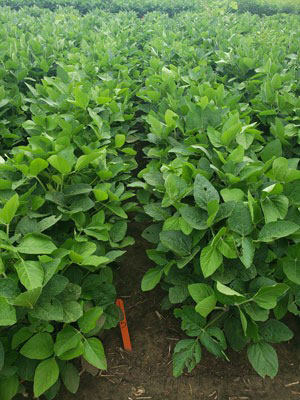Farmers planning to apply XtendiMax, Engenia, or Tavium to their dicamba-resistant soybean have about two weeks remaining to make those herbicide applications. These are the only dicamba-containing products labeled for over-the-top use in dicamba-resistant soybean and cotton. One of the requirements added to these labels in 2021 was a cut-off date for applications. The last day these products can legally be applied to soybeans is June 30, and the cut-off date for cotton is July 30.
For those making over-the-top dicamba applications in the coming days, remember that the restrictions listed below are included on the labels to reduce off-target movement.
- It can only be applied by certified applicators with dicamba-specific training.
- Spray records must be created within 72 hours of application and kept for 2 years.
- Only approved nozzles and tank-mix partners listed on the Xtendimax, Engenia, or Tavium website can be used.
- An approved volatility reduction agent and an approved drift reduction agent must be included in the tank mix.
- Maximum boom height is 24 inches above the canopy.
- Maximum ground speed is 15 miles per hour.
- Only apply when wind speeds at boom height are 3 to 10 miles per hour.
- Do not apply if a run-off-producing rain event is forecast in the next 48 hours.
- Do not apply if sensitive crops are downwind. A sensitive crop directory, such as FieldWatch, can help determine the location of sensitive crops.
- Maintain a 240-foot downwind buffer.
- Ensure the entire sprayer system is cleaned before and after application.
- The Bulletins Live Two website must be consulted to ensure the application will not affect endangered species.

For more detailed information, see the “2024 Chemical Weed Control for Field Crops, Pastures, and Noncropland” guide available online at https://www.bookstore.ksre.ksu.edu/pubs/CHEMWEEDGUIDE.pdf or check with your local K-State Research and Extension office for a paper copy.
The use of trade names is for clarity to readers and does not imply endorsement of a particular product, nor does exclusion imply non-approval. Always consult the herbicide label for the most current use requirements.
Sarah Lancaster, Weed Science Extension Specialist
slancaster@ksu.edu
Frannie Miller, Pesticide Safety and IPM Coordinator
fmiller@ksu.edu